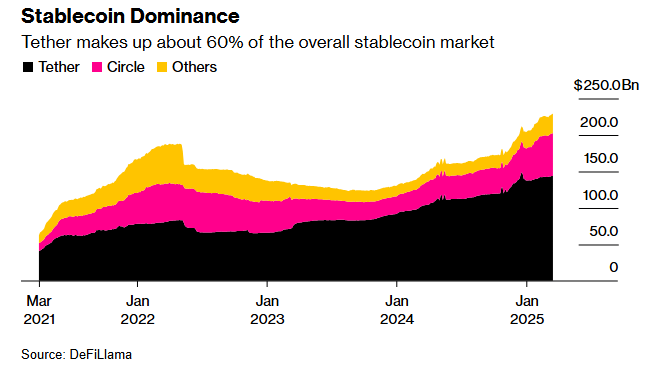The stablecoin market capitalization has increased by 90% since the end of 2023, surpassing $230 billion. These digital tokens maintain a stable value backed by reserves.
As the use of stablecoins in international transactions increases, strengthening the U.S. dollar's position as the global reserve currency, critics warn that stablecoins could create systemic risks reminiscent of past financial crises.
Stablecoins and the Risk of a New Financial Crisis
During market turmoil, stablecoin holders can quickly redeem tokens for cash, potentially forcing issuers to rapidly sell their held assets. This could cause instability in financial markets.
A similar situation occurred in 2008 when the Reserve Primary Fund, a major money market fund, was exposed to Lehman Brothers' bad debt, breaking its dollar peg. This event triggered widespread panic and massive redemptions of money market funds, throwing the global financial system into chaos.
Federal Reserve Governor Lisa D. Cook says similar risks could apply to stablecoins.
At a recent financial conference, she stated that "a large-scale stablecoin sell-off could cause disruption by liquidating assets backing the stablecoin, especially if those assets are linked to other money markets" she said.
Currently, lawmakers are showing movements to regulate stablecoins through legislative activities such as the Genius Act and New Stable Act. These bills aim to integrate stablecoins into the financial system, requiring issuers to obtain licenses and back tokens with approved assets like cash, U.S. Treasury bills, and money market funds.
However, critics argue that the Genius bill lacks key safeguards to prevent financial instability. Senator Elizabeth Warren, in particular, raised her voice warning that the bill would allow stablecoin issuers to invest in risky assets.
"According to this bill, stablecoin issuers can invest in the same assets that received bailouts in 2008. No one believes U.S. taxpayers won't bail them out," Bloomberg quoted Warren's statement from a recent Senate hearing reported.
China and EU Criticize U.S. Monetary Hegemony through Stablecoins
Despite their risks, stablecoins have played an important role in strengthening the U.S. dollar's dominance. A significant portion of global stablecoin transactions occur with dollar-based tokens like Tether (USDT) and USD Coin (USDC).
This widespread adoption strengthens the dollar's role in international trade, increasing demand for U.S. assets. However, China has expressed concerns that U.S. influence in digital currencies could weaken its financial sovereignty.
Chinese economist Zhang Ming said, "Dollar-based stablecoins can significantly solidify the U.S. dollar's hegemony by more closely connecting the international credit of the U.S. dollar with application scenarios in the virtual world."
Against this backdrop, China is accelerating the development of the digital yuan to reduce dependence on dollar-based stablecoins in international transactions. The European Union shares a similar perspective.
The stablecoin industry is also facing disruption from traditional financial institutions. Major banks, including Bank of America, are reportedly reviewing stablecoin services, following regulatory developments allowing U.S. banks to offer cryptocurrency and stablecoin services.
This new competition could weaken the market dominance of private issuers like Tether and Circle, but might also further integrate stablecoins into mainstream financial systems.

As stablecoins expand, their impact on the financial system grows. On one hand, they provide benefits like improved payment efficiency and cross-border transactions. On the other hand, their potential to cause financial instability cannot be ignored.
Policymakers and financial institutions must approach carefully to ensure regulatory frameworks can both foster innovation and mitigate risks.
The lesson from 2008 clearly shows that seemingly stable financial products can collapse at surprising speeds.






